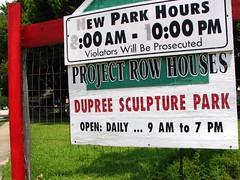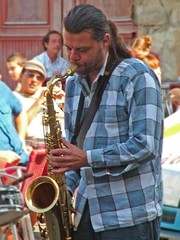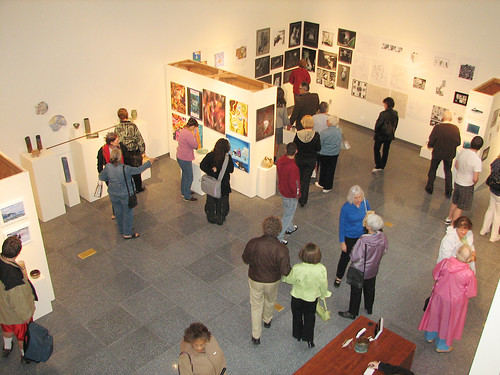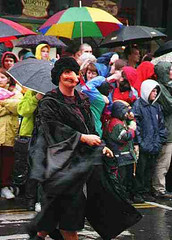The Role Of The Arts In Thriving Communities
I believe one of the indicators of a healthy community – the kind of place that is likely to be loved and endure – is good evidence of creative expression. Whether it's painting, photography, music, dance, sculpture, performance or something else, people like being around artists who inspire not just our rational selves but also our more intuitive, "right-side-of-the-brain" selves.
Some art is explicitly environmental – Marvin Gaye's classic "Mercy Mercy Me," for example, or Robert Rauschenberg's striking images for the 1970 Earth Day and the 1992 Earth Summit – but art can also have great indirect environmental benefits, by helping revitalize older, distressed neighborhoods. This, in turn, creates stronger cities and towns that are better positioned to absorb population and economic growth that might otherwise be diverted to sprawl.
I've had several occasions in this blog to describe arts-driven revitalization, from Syracuse to Paducah. I think my favorites, though, remain two small arts-driven projects in Houston and Los Angeles. In 2006 Project Row Houses, in Houston, was called "the most impressive and visionary public art project in the United States" by Michael Kimmelman in the International Herald Tribune. 
The Watts House Project in Los Angeles, initiated by artist Edgar Arceneaux and modeled in some respects after Project Row Houses, is "a collaborative art work in the shape of a neighborhood redevelopment." Artists, architects and residents are working together to rehabilitate the area's small houses in order both to create a sense of community identity and to facilitate small-scale, home-based economic development that can capitalize on the neighboring Watts Towers, a majestic work of folk art that draws 250,000 visitors each year. It's very much a work in progress: visit the project's web site here.

The project has identified a set of indicators that collectively can suggest a community's "cultural vitality" and identify arts and culture needs. Here they are, in three categories (with a little word editing by me):
Venues for cultural participation
- Nonprofit, public, and commercial arts-related organizations
- Retail arts venues—bookstores, music stores, film theaters, craft and art supply stores
- Non-arts venues (e.g., parks, libraries, associations, societies, and centers) with arts and cultural programming
Festivals and parades
- Arts-focused media outlets (print and electronic, including web-based venues)
- Art schools
Participation in arts and culture
- Amateur art-making
- Collective/community art-making
- Arts education K-12
- Arts after-school programs
- Audience participation
- Purchase of artistic goods (materials for making art as well as art products)
- Discourse about arts and culture in the media
Support for arts and culture
- Public expenditures in support of the arts
- Foundation expenditures in support of the arts
- Volunteering and personal giving to the arts
- Presence of artists ("professional artists as well as people who are tradition bearers but may not make money from their arts practice")
- Integration of arts and culture into other policy areas (e.g., community development, education, parks and recreation, etc.)
While surely these indicators can be better articulated, and perhaps added to or subtracted from, the idea of a checklist to assist thinking about the degree to which art and culture are welcomed and supported in a community is a good one. Anything that readers might add or subtract? Any particularly good arts activity in your community that others might learn from?
Move your cursor over the images for credit information.
Kaid Benfield writes (almost) daily about community, development, and the environment. For more posts, see his blog's home page.


